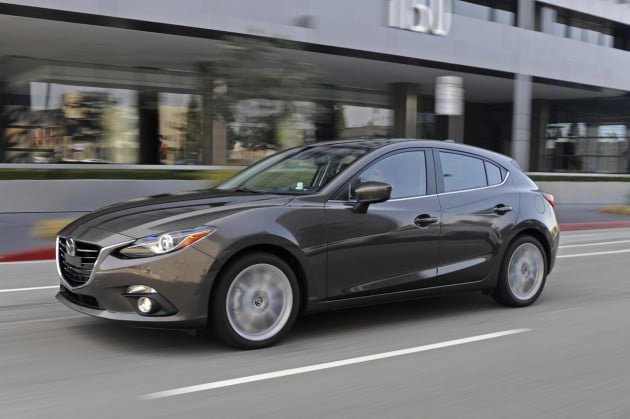The initial hype over the new-gen Mazda3 unveiling is barely over, and there’s already news of the hot version – the inevitable Mazda3 MPS (or Mazdaspeed3 in USA) replacement. By news we mean rumours, and if we’re being honest, by rumours we mean blind speculations by the folks over at Auto Express.
Citing an anonymous senior engineer within Mazda’s ranks, the report suggests that the next Mazda3 MPS will drop its current 2.3 litre turbocharged engine in favour of a high-revving, naturally aspirated 2.0 litre motor. It will be based on the new 3’s 163 hp 2.0 litre SkyActiv mill, tuned up to 200 hp and a 7,000 rpm rev limit.
If accurate, that would make the new model over 50 hp less powerful than the outgoing model, a definite backward step no matter how you see it. Torque will take an even bigger dip from the current 380 Nm, as without a turbo it’s unlikely to offer much more than the standard 2.0 SkyActiv’s 210 Nm (which is already on the high side for an NA 2.0 litre engine).
Such a left-field setup will make it the spiritual successor to the FN2 Euro Honda Civic Type R – a peculiar move since even that discontinued model will be replaced by a new turbocharged hero with up to 265-300 hp come 2015 to keep up with ever-increasingly more powerful force-inducted class rivals.
That said, the current Mazda3 MPS is all about brute power with little to no handling finesse. Perhaps Mazda is targeting the opposite outcome for the next-gen MPS – harnessing class-beating driving dynamics at the expense of all-out speed. The Mazda MX-5 has played that card to good effect, so there’s no saying the Mazda3 MPS can’t do the same. What do you all think?
Looking to sell your car? Sell it with Carro.




























AI-generated Summary ✨
Comments reveal mixed reactions to Mazda potentially dropping turbo for the next Mazda3 MPS, with many enthusiasts preferring turbo engines for their power and torque, while others appreciate the reliability and throttle response of naturally aspirated engines. Several commenters express skepticism about Mazda's decision, noting that competitors like Honda and VW employ turbocharging successfully. Some argue that a high-revving NA engine offers better throttle response and a purer driving experience, especially in small hatchbacks, and criticize Mazda's approach as a step backward. Overall, opinions highlight a tension between performance, emissions, and engine complexity, with many hoping Mazda will offer a balanced solution that retains driving thrill. Sentiments range from supportive to critical, emphasizing the importance of engine choice in hot hatch performance.